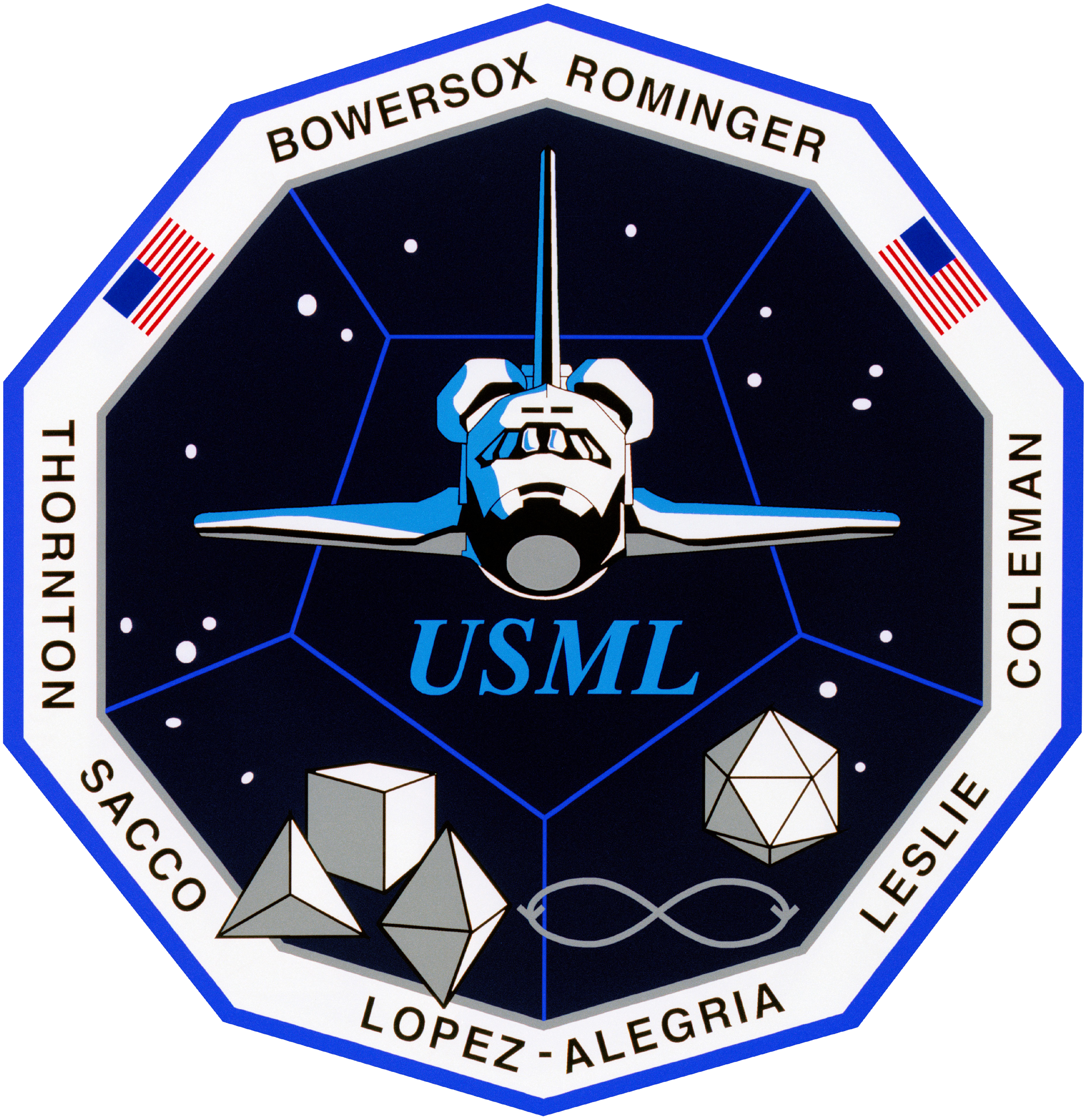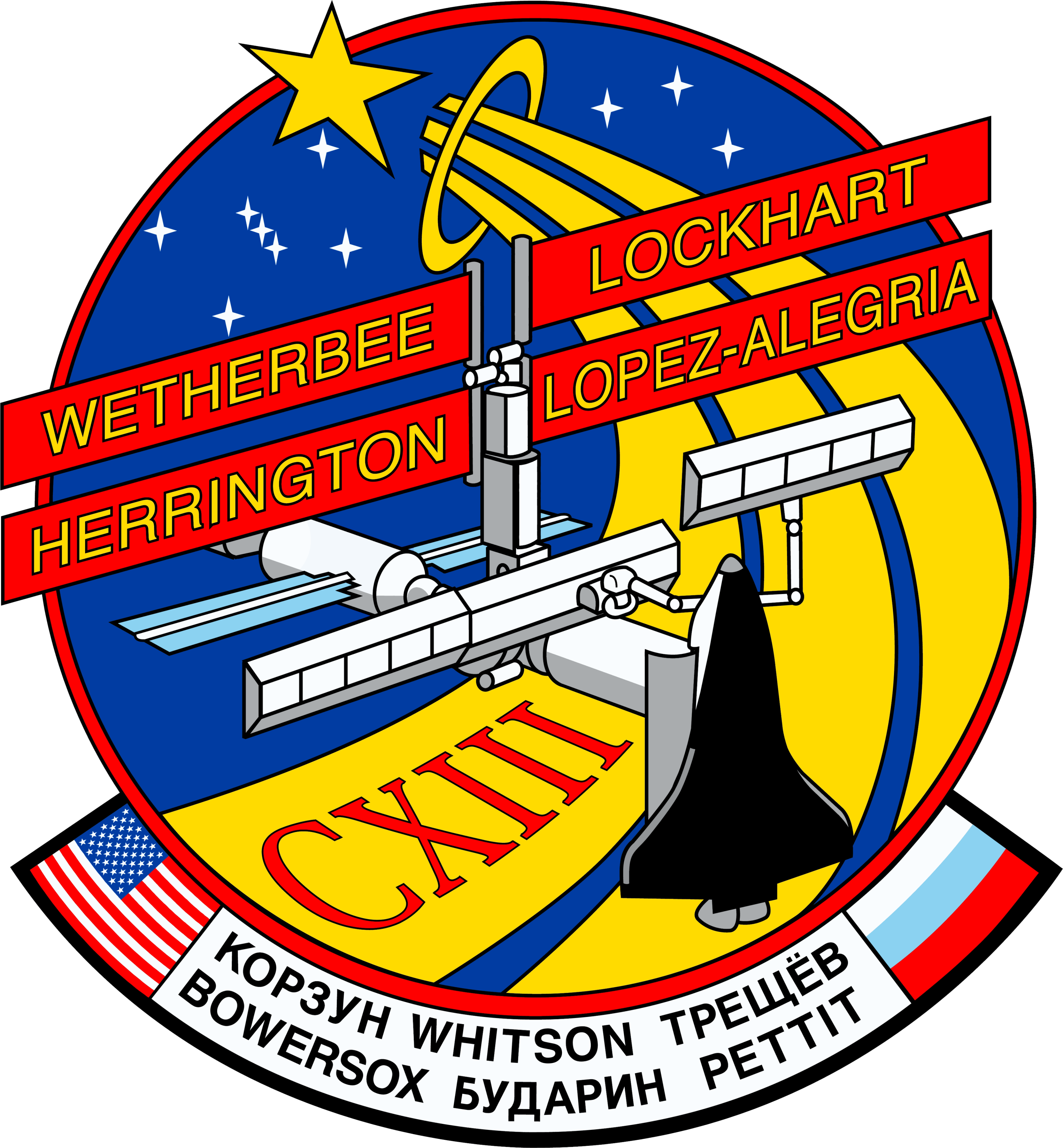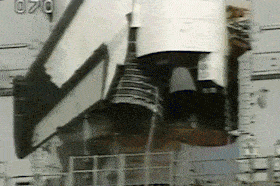|
STS-113
STS-113 was a Space Shuttle mission to the International Space Station (ISS) flown by Space Shuttle ''Space Shuttle Endeavour, Endeavour''. During the 14-day mission in late 2002, ''Endeavour'' and its crew extended the ISS backbone with the Integrated Truss Structure, P1 truss and exchanged the Expedition 5 and Expedition 6 crews aboard the station. With commander James D. Wetherbee, Jim Wetherbee and pilot Paul Lockhart (astronaut), Paul Lockhart at the controls, ''Endeavour'' docked with the station on 25 November 2002 to begin seven days of station assembly, spacewalks, and crew and equipment transfers. This was the last flight of ''Endeavour'' before entering its Orbiter Major Modification period until STS-118 in 2007, which included Glass cockpit#NASA Space Shuttle program, modernizing the cockpit, and also the final shuttle mission before the Space Shuttle Columbia disaster, ''Columbia'' disaster. Crew Mission highlights STS-113 was an Assembly Mission (11A) to the Inte ... [...More Info...] [...Related Items...] OR: [Wikipedia] [Google] [Baidu] |
Michael López-Alegría
Michael López-Alegría (born Miguel Eladio López Alegría on May 30, 1958) is an astronaut, test pilot and commercial astronaut with dual nationality, American and Spanish; a veteran of three Space Shuttle missions and one International Space Station mission. He is known for having performed ten spacewalks so far in his career, presently holding the second longest all-time EVA duration record (first among NASA astronauts) and having the fifth-longest spaceflight of any American at the length of 215 days; this time was spent on board the ISS from September 18, 2006, to April 21, 2007. López-Alegría commanded Axiom-1, the first ever all-private team of commercial astronaut mission to the International Space Station, which launched on April 8, 2022, and spent just over 17 days in Earth's orbit. Background Son of a Spanish father and an American mother, López-Alegría was born in Madrid, Spain and raised in Mission Viejo, California. After graduating from Mission Viejo ... [...More Info...] [...Related Items...] OR: [Wikipedia] [Google] [Baidu] |
Sergey Treshchov
Sergey Yevgenyevich Treshchov (; born 18 August 1958) is a former cosmonaut of the RSC Energia. He spent 184 days in space as a flight engineer of the International Space Station long duration Expedition 5 crew. During the mission he also conducted a spacewalk. Personal Treshchov was born in Volynsky District, in the Lipetsk Region of Russia. His father is Evgueniy Georgievich Treshchov, his mother is Nina Davydovna Treshchova. Treshchov and his wife, Elvira Viktorovna Treshchova have two sons, Dmitriy born in 1988 and Aleksey born in 1992. His hobbies include soccer, volleyball, ice hockey, hiking, tennis, music, photography, and video. Education In 1976 Treshchov graduated from technical school as an electric welder. In 1982 he graduated from the Moscow Power Institute specializing in "engineer-teacher of electrical power disciplines". Experience From 1982 to 1984, Treschov served as a group leader in an Air force regiment. He worked as a foreman and as an engineer at ... [...More Info...] [...Related Items...] OR: [Wikipedia] [Google] [Baidu] |
Paul Lockhart (astronaut)
Paul Scott "Paco" Lockhart (born April 28, 1956) is an American aerospace engineer, retired United States Air Force colonel and NASA astronaut, a veteran of two Space Shuttle missions. Early life and education Lockhart, born April 28, 1956, and reared in Amarillo, Texas, graduated from Tascosa High School in 1974. He received a Bachelor of Arts degree in mathematics from Texas Tech University in 1978, and a Master of Science degree in aerospace engineering from University of Texas at Austin before being commissioned in 1981 into the United States Air Force The United States Air Force (USAF) is the Air force, air service branch of the United States Department of Defense. It is one of the six United States Armed Forces and one of the eight uniformed services of the United States. Tracing its ori .... He also studied at the University of Innsbruck and the University of Vienna Summer School from 1978 to 1979 on a Rotarian Fellowship. Has also completed aerospace-related cour ... [...More Info...] [...Related Items...] OR: [Wikipedia] [Google] [Baidu] |
Integrated Truss Structure
The Integrated Truss Structure (ITS) of the International Space Station (ISS) consists of a linear arranged sequence of connected trusses on which various unpressurized components are mounted such as logistics carriers, radiators, ISS Solar Arrays, solar arrays, and other equipment. It supplies the ISS with a Spacecraft bus, bus architecture. It is approximately 110 meters long and is made from aluminium and stainless steel. Truss components All truss components were named after their planned end-positions: Z for zenith, S for starboard and P for port, with the number indicating the sequential position. The S0 truss might be considered a misnomer, as it is mounted centrally on the zenith position of ''Destiny'' and is neither starboard nor port side. Manufacturing ISS truss segments were Manufacturing of the International Space Station, fabricated by Boeing in its facilities at Huntington Beach, California (formerly McDonnell Douglas), Michoud Assembly Facility in New Orlean ... [...More Info...] [...Related Items...] OR: [Wikipedia] [Google] [Baidu] |
Expedition 6
Expedition 6 was the sixth expedition to the International Space Station (25 November 2002 – 3 May 2003). It was the last three-man crew to reside on the station until the arrival of STS-121 in 2006, delivering the final astronaut of Expedition 13. The crew performed two spacewalks in support of maintenance and assembly of the International Space Station. Crew Mission parameters * Perigee: 384 km * Apogee: 396 km * Inclination: 51.6° * Period: 92 min Mission objectives The station's sixth crew was launched to the Station aboard Space Shuttle ''Endeavour'' STS-113 in November 2002. The mission was planned to be a four-month mission that was to end in March 2003 when ''Atlantis'' STS-114 was to fly to the station with the Expedition 7 crew. The ''Columbia'' disaster, which occurred during the mission on 1 February 2003 and resulted in the indefinite suspension of shuttle flights, led to a change of plan such that the crew stayed on the station until M ... [...More Info...] [...Related Items...] OR: [Wikipedia] [Google] [Baidu] |
Expedition 5
Expedition 5 was the fifth long-duration stay on the International Space Station (ISS). The crew, consisting of three people, remained in space for 184 days, 178 of which were spent aboard the ISS. Expedition 5 was a continuation of an uninterrupted human presence in space, as of November 2000, which was begun by Expedition 1 in 2000–2001. The crew of Expedition 5 launched to space aboard the Space Shuttle ''Endeavour'' aboard the STS-111 mission on 5 June 2002. Their tenure aboard the station, however, did not begin until they docked with the ISS two days later on 7 June. Crew Mission parameters *Perigee: 384 km * Apogee: 396 km *Inclination: 51.6° * Period: 92 min left, 250px, Peggy A. Whitson, Expedition Five flight engineer, wears a Russian Orlan spacesuit as she prepares for an EVA. (NASA) Mission objectives The Expedition 5 crew took charge of ISS operations on 7 June 2002. An official ceremony between expedition crews took place 10 June, wit ... [...More Info...] [...Related Items...] OR: [Wikipedia] [Google] [Baidu] |
STS-112
STS-112 (ISS assembly sequence, ISS assembly flight 9A) was an 11-day Space Shuttle mission to the International Space Station (ISS) flown by . Space Shuttle ''Atlantis'' was launched on 7 October 2002 at 19:45 UTC from the Kennedy Space Center's launch pad 39B to deliver the 28,000 pound Starboard 1 (S1) truss segment to the Space Station. Ending a 4.5-million-mile journey, ''Atlantis'' landed at 15:44 UTC on 18 October 2002 on runway 33 at the Kennedy Space Center's Shuttle Landing Facility. During the launch, the ET bipod ramp shed a chunk of Space Shuttle external tank#Thermal protection system, foam that caused a dent ~4" wide and 3" deep into the metal SRB-ET Attach Ring near the bottom of the left Space Shuttle Solid Rocket Booster. Prior to the next mission (STS-113), an upper-level decision was made at NASA to continue with launches as scheduled. The launch subsequent to that was the Space Shuttle Columbia disaster, Space Shuttle ''Columbia'' disaster, the ill-fated STS-1 ... [...More Info...] [...Related Items...] OR: [Wikipedia] [Google] [Baidu] |
Space Shuttle Endeavour
Space Shuttle ''Endeavour'' (Orbiter Vehicle Designation: OV-105) is a retired Space Shuttle orbiter, orbiter from NASA's Space Shuttle program and the fifth and final operational Space Shuttle, Shuttle built. It embarked on its first mission, STS-49, in May 1992 and its 25th and final mission, STS-134, in May 2011. STS-134 was expected to be the final mission of the Space Shuttle program, but with the authorization of STS-135 by the United States Congress, Space Shuttle Atlantis, ''Atlantis'' became the last shuttle to fly. The United States Congress approved the construction of ''Endeavour'' in 1987 to replace the Space Shuttle Challenger, Space Shuttle ''Challenger'', which was Space Shuttle Challenger disaster, destroyed in 1986. NASA chose, on cost grounds, to build much of ''Endeavour'' from spare parts rather than refitting the Space Shuttle Enterprise, Space Shuttle ''Enterprise'', and used structural spares built during the construction of ''Space Shuttle Discovery, Di ... [...More Info...] [...Related Items...] OR: [Wikipedia] [Google] [Baidu] |
STS-107
STS-107 was the 113th flight of the Space Shuttle program, and the 28th(twenty eigth) and final flight of Space Shuttle ''Columbia''. The mission ended on the 1st of February 2003, with the Space Shuttle ''Columbia'' disaster which killed all seven crew members and destroyed the space shuttle. It was the 88th post- ''Challenger'' disaster mission. The flight launched from Kennedy Space Center in Florida on January 16, 2003. It spent 15 days, 22 hours, 20 minutes, 32 seconds in orbit. The crew conducted a multitude of international scientific experiments. The disaster occurred during reentry while the orbiter was over Texas. Immediately after the disaster, NASA convened the ''Columbia'' Accident Investigation Board to determine the cause of the disintegration. The source of the failure was determined to have been caused by a piece of foam that broke off during launch and damaged the thermal protection system ( reinforced carbon-carbon panels and thermal protection tiles) on ... [...More Info...] [...Related Items...] OR: [Wikipedia] [Google] [Baidu] |
International Space Station
The International Space Station (ISS) is a large space station that was Assembly of the International Space Station, assembled and is maintained in low Earth orbit by a collaboration of five space agencies and their contractors: NASA (United States), Roscosmos (Russia), European Space Agency, ESA (Europe), JAXA (Japan), and Canadian Space Agency, CSA (Canada). As the largest space station ever constructed, it primarily serves as a platform for conducting scientific experiments in microgravity and studying the space environment. The station is divided into two main sections: the Russian Orbital Segment (ROS), developed by Roscosmos, and the US Orbital Segment (USOS), built by NASA, ESA, JAXA, and CSA. A striking feature of the ISS is the Integrated Truss Structure, which connect the station’s vast system of solar panels and Spacecraft thermal control, radiators to its pressurized modules. These modules support diverse functions, including scientific research, crew habitation, ... [...More Info...] [...Related Items...] OR: [Wikipedia] [Google] [Baidu] |
STS-118
STS-118 was a Space Shuttle mission to the International Space Station (ISS) flown by the orbiter ''Space Shuttle Endeavour, Endeavour''. STS-118 lifted off on August 8, 2007, from Kennedy Space Center Launch Complex 39, launch pad 39A at Kennedy Space Center (KSC), Florida and landed at the Shuttle Landing Facility at KSC on August 21, 2007. This was the first flight of ''Endeavour'' since STS-113 in November 2002, which was also the last successful shuttle flight before STS-107 which culminated in the loss of ''Space Shuttle Columbia, Columbia'' when it Space Shuttle Columbia disaster, disintegrated during reentry. STS-118 pilot Charles Hobaugh had been the entry team Flight controller#Spacecraft communicator (CAPCOM), CAPCOM for STS-107. ''Columbia'' had originally been selected for this flight, for what would have been its 29th mission, and its first and likely only visit to the ISS, mainly due to Space Shuttle Columbia#Weight, its heavier weight. The mission is also referred ... [...More Info...] [...Related Items...] OR: [Wikipedia] [Google] [Baidu] |
Kennedy Space Center Launch Complex 39A
Launch Complex 39A (LC-39A) is the first of Launch Complex 39's three launch pads, located at NASA's Kennedy Space Center in Merritt Island, Florida. The pad, along with Launch Complex 39B, was built in the 1960s to accommodate the Saturn V launch vehicle, and has been used to support NASA crewed space flight missions, including the historic Apollo 11 moon landing and the Space Shuttle. Since 2014 the site has been leased by SpaceX and supports launches of the Falcon 9 and Falcon Heavy rockets. History Apollo program In 1961, U.S. President Kennedy proposed to the U.S. Congress the goal of landing a man on the Moon by the end of the decade. Congressional approval led to the launch of the Apollo program, which required a massive expansion of NASA operations, including an expansion of launch operations from the Cape to adjacent Merritt Island to the north and west. First named Launch Complex 39C, Launch Complex 39A was designed to handle launches of the Saturn V rocket, ... [...More Info...] [...Related Items...] OR: [Wikipedia] [Google] [Baidu] |









